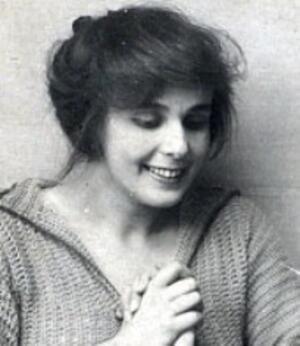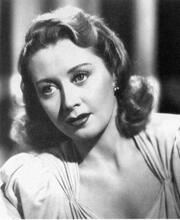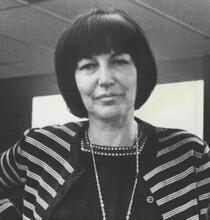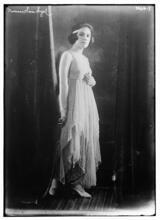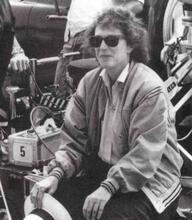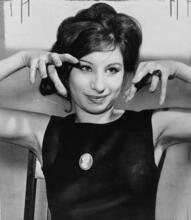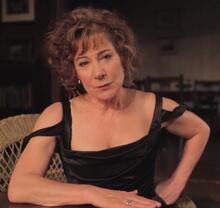Lili Darvas
Lili Darvas earned praise for acting both classic and modern roles with great dramatic range. Darvas studied at the Budapest Lyceum before making her professional debut at age twenty as the lead in Romeo and Juliet. She married one of Hungary’s leading playwrights, Ferenc Molnar, who wrote plays specifically for her. In 1926 Darvas joined Max Reinhardt's troupe, performing plays in German and English. In the 1930s, she began working in film. In 1944, she made her Broadway debut in Soldier’s Wife. The following year, she played Gertrude in Maurice Evans’ “GI” production of Hamlet. Throughout the 1950s and 1960s, she performed a variety of roles on the New York stage and on television; her last major role on Broadway was Madame Nielsen in Les Blancs in 1970.
Article
International actor Lili Darvas won acclaim in her adopted country, the United States, on stage, in films, and on television. Born in Budapest on April 10, 1902, to Alexander and Berta (Freiberger) Darvas, both of whom were Jewish, she was educated at the Budapest Lyceum. She made her professional debut at age twenty, playing Juliet in Shakespeare’s Romeo and Juliet at the Magyar Szinhas in Budapest. Married to one of Hungary’s outstanding playwrights, Ferenc Molnar, Darvas appeared in a range of modern and classical works and became one of Budapest’s leading actors. Molnar, inspired by her talent, created a series of sparkling plays for her, including Riviera, Olympia, and The Girl from Trieste. In 1926, Darvas joined the acting troupe of the German impresario Max Reinhardt, even though she had learned to speak German only two years earlier, by reciting classical German verse plays for hours at a time.
She performed with Reinhardt’s company in Vienna and Berlin and at the Salzburg Festival until 1938. Her roles included Beatrice in Much Ado about Nothing, Lady Milford in Kabale und Liebe, Vivie in Mrs. Warren’s Profession, and Sadie Thompson in Rain. When Reinhardt’s company traveled to New York in 1927, Darvas appeared as Titania in A Midsummer Night’s Dream, as Faith in Jedermann, Lucille in Danton’s Tod, and Beatrice in The Servant of Two Masters. Like other actors in the Reinhardt company, she gravitated to film work in the 1930s. Toward the end of her prewar European career, she played the title role in the film Marie Baskirchev (1936). Her next significant movie role would be in the MGM all-star musical Meet Me in Las Vegas in 1956.
Darvas’s particular strength was her acting range. She combined the fetching qualities of an ingenue with the depth and mature allure of an experienced woman of the world. In 1938, she left Europe, immigrating to the United States, where she became a citizen in 1944.
In 1944, she made her Broadway debut as Peter Gray, the women’s page editor of the Herald Tribune, in the play Soldier’s Wife. Her performance led critic George Jean Nathan to praise her performance even as he wondered what a Hungarian was doing on the staff of that newspaper. The following season, she played Gertrude in Maurice Evans’s famous “G. I.” production of Hamlet. Throughout the 1950s and 1960s, Darvas worked steadily on the New York stage. She returned to Budapest to perform in a revival of Olympia in 1965 and made the film Love there five years later. Her last major Broadway stage role was that of Madame Neilsen in Les Blancs in 1970.
In 1951, she began a television career that would lead to roles in over a hundred programs. Her most significant television performance was in the title role of the National Educational Television Opera Theatre production of Rachel La Cabana in 1973.
Lili Darvas died on July 22, 1974. The theater critic Harold Clurman summed up her talent: “Lili Darvas’ pulsating heartiness, a kind of paprika which flavors the dismal and obscene with the dignity of sound human instincts, is a cause for rejoicing.”
All the Plays of Molnar (1937).
Clurman, Harold. Review of Happiness. The Nation (November 27, 1967).
EJ; Loggia, Marjorie, and Glenn Young. The Collected Works of Harold Clurman (1994).
Nathan, George Jean. The Theatre Book of the Year 1944–45 (1945).
Obituary. NYTimes, July 23, 1974, 40:1.
Rigdon, Walter, ed. The Biographical Encyclopedia and Who’s Who of the American Theatre (1966).
WWWIA 6.

